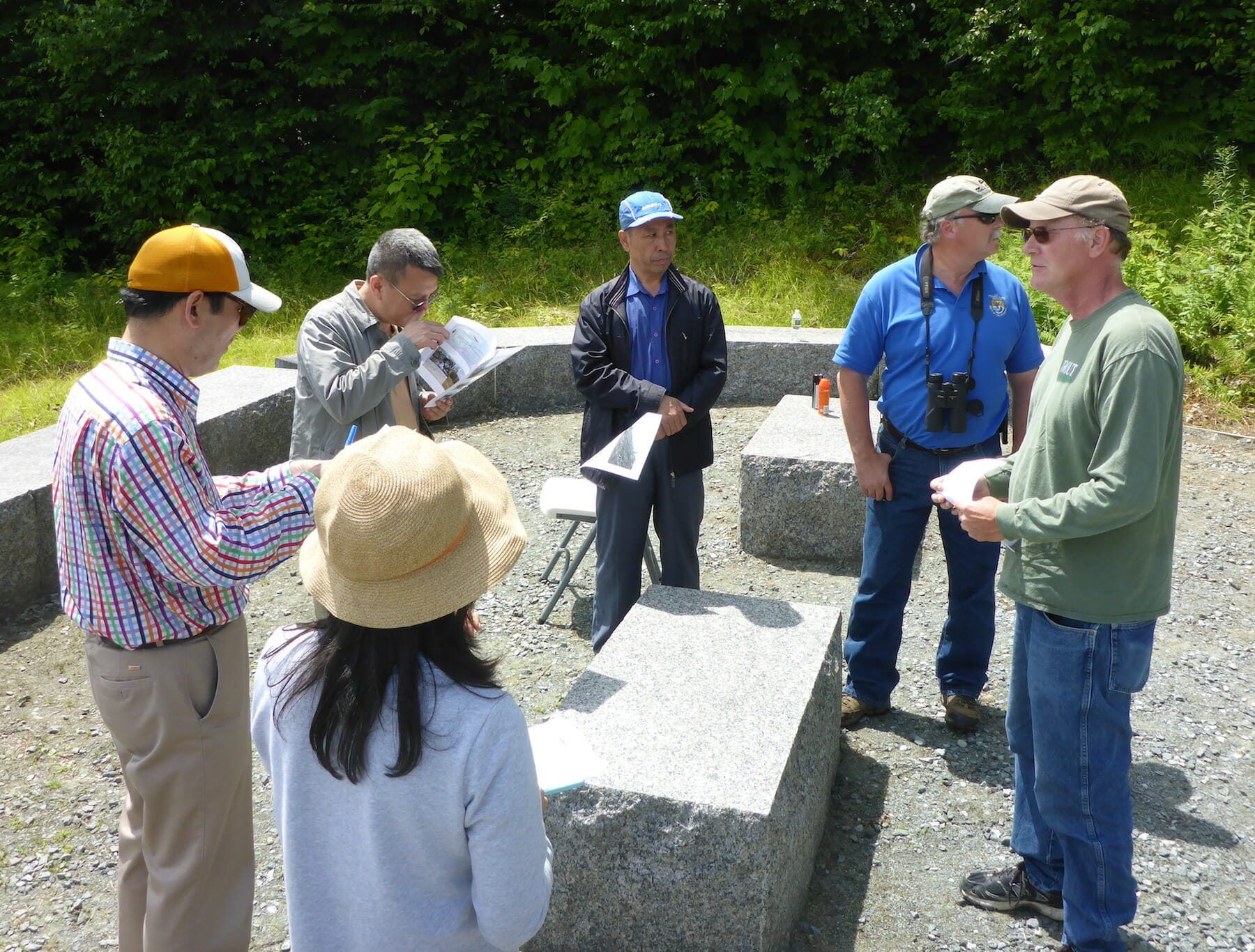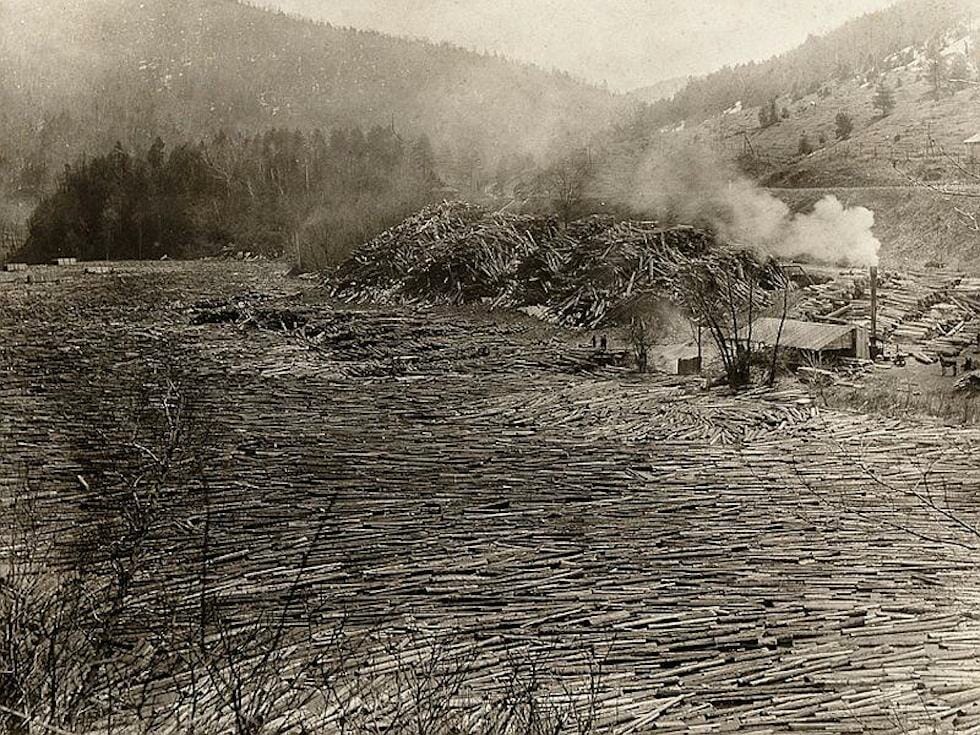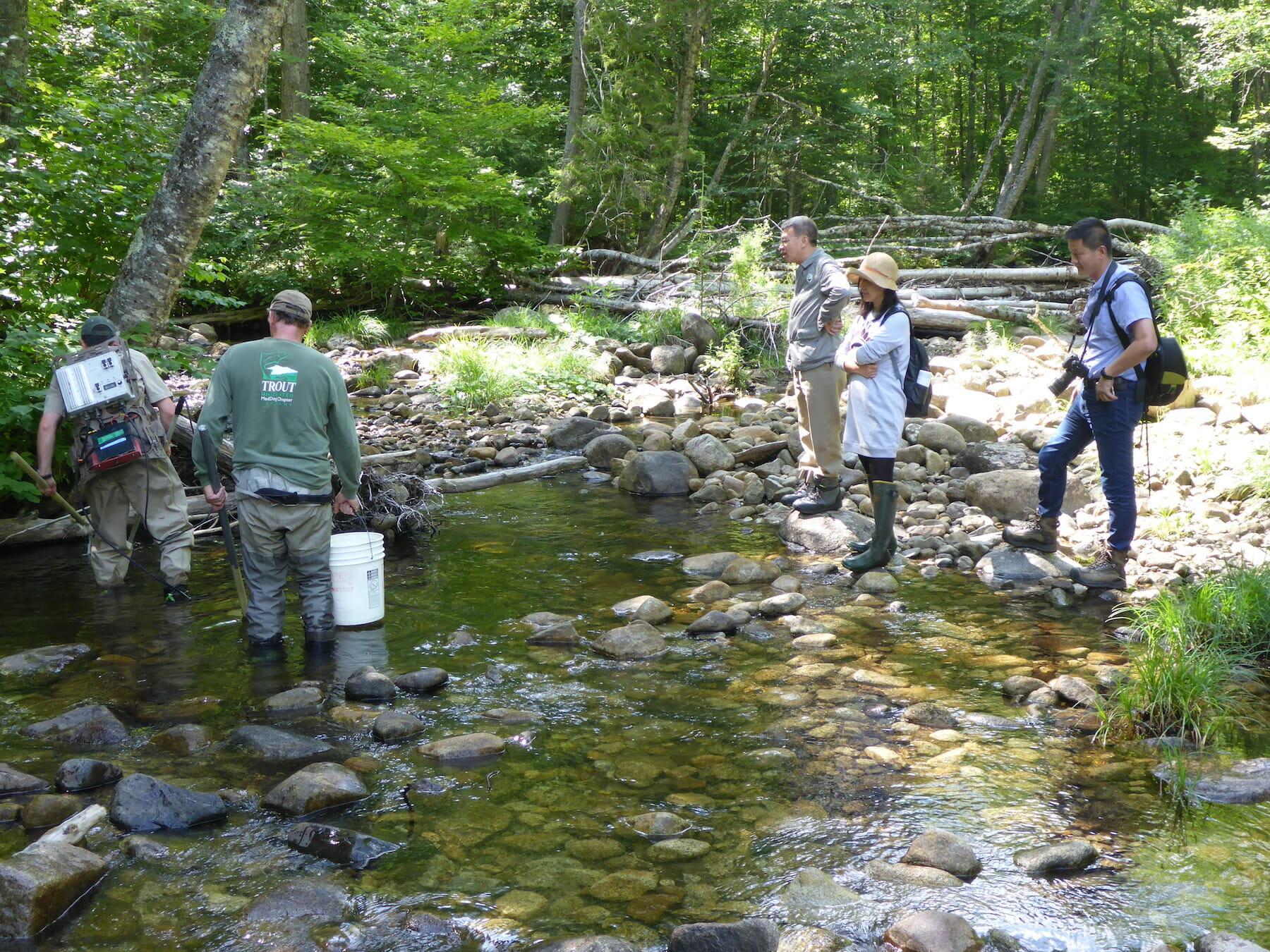Recently, TU’s Upper Connecticut Home River’s Initiative, along with our partners at the Vermont Fish and Wildlife Department, were invited to speak to employees of the USFWS and the Chinese Department of Wildlife Conservation and Nature Reserve Management, and the Cinese State Academy of Foresty, about our stream restoration and research projects on the Silvio O. Conte Wildlife Refuge’s Nulhegan Basin District.
The Chinese delegation, along with an interpreter, spent several days touring National Wildlife Refuges throughout northern New England, and as part of the trip, they toured the Nulhegan Basin.

For the TU and VTFW part of the tour, Joe Norton, TU project manager, and Jud Kratzer, VTFW fisheries biologist, gave a lunchtime presentation (above) about their work and provided a quick history of the Nulhegan watershed and the damage that exists to this day from the historic log drives of the late 1800s and early 1900s.
So logs could be driven to market, the Nulhegan River and its branches were straightened, boulders were dynamited, woody habitat was removed, and log drive dams were built along the rivers. As a result, large sections of the river are still wide, shallow and straight with little brook trout habitat or shade cover.

After lunch, the tour visited the Black Branch of the Nulhegan, where TU and VTFW strategically added large woody habitat in 2013 and 2014. While there, Norton and Kratzer showed their in-stream restorations to the visitors and explained their techniques.
The group discussed brook trout life history, biology, habitat problems, and issues like flood resiliency. Then the guests were able to watch as Norton and Kratzer electrofished the stream at two sites where large woody habitat were installed, so the visitors could see Vermont’s native brook trout and other native fish first hand.



